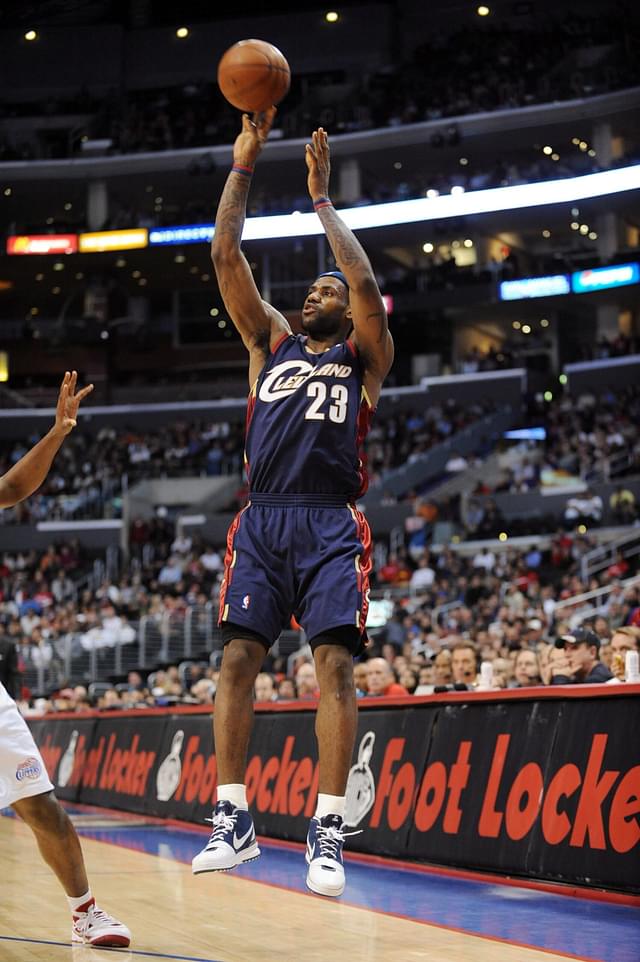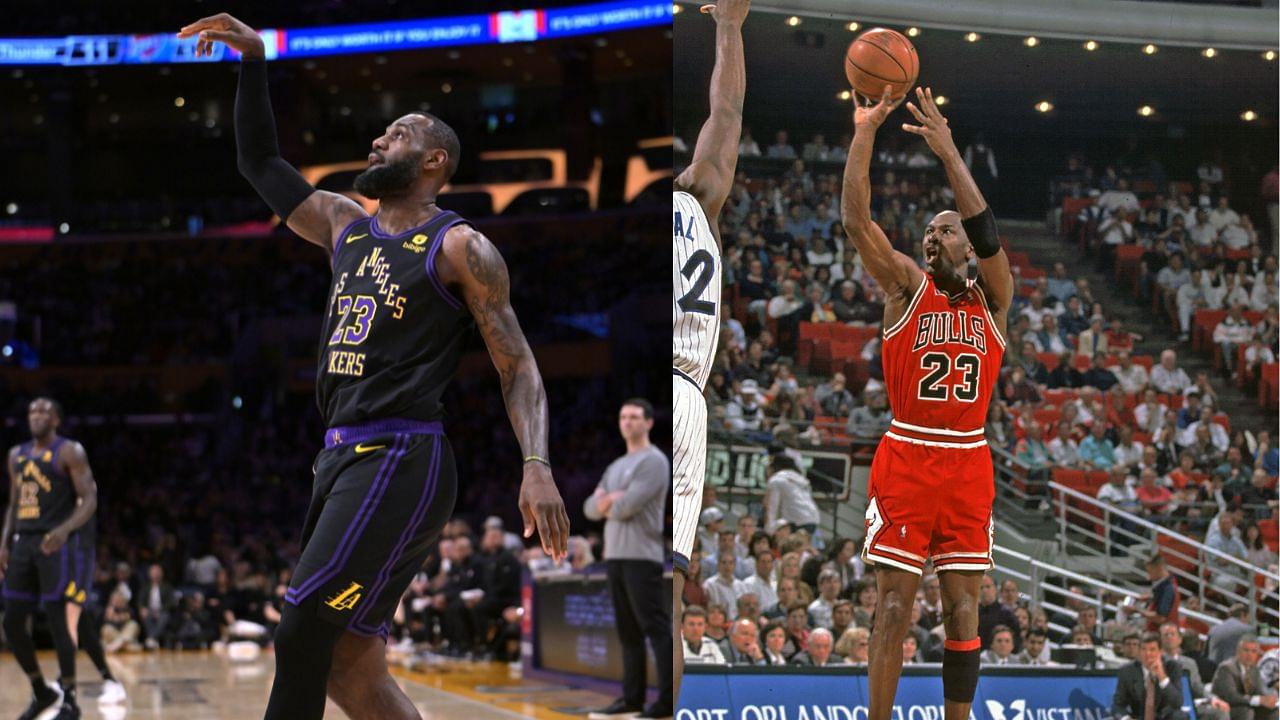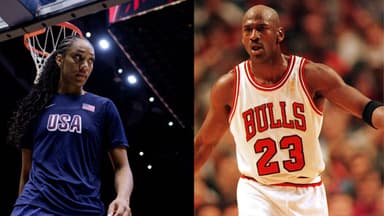Among NBA enthusiasts, the GOAT debate usually boils down to LeBron James and Michael Jordan. Jordan developed a versatile scoring game early in his career. LBJ also extensively worked on his shooting game and improved as a scorer and it helped him add a three-point shot in his arsenal.
Advertisement
Therefore, looking at the shooting distances from which both athletes struck the most during their top-scoring seasons can provide an intriguing glance at how the two fared from distance. Let us look into their scoring output from the 5-9 feet, 10-14 feet, 15-19 feet, and 20-24 feet
Michael Jordan
During the 1986-87 season, MJ had his best scoring as he notched a league-high 37.1 points per game while shooting 48.2% from the floor. However, the NBA only started tracking distance-wise shooting stats in the 1996-97 season. From 1996-97 to 2002-03 season, MJ’s best scoring season came during the first season when the NBA started to track distance-wise shooting.
MJ showed incredible prowess from mid-range this season and scooped up 29.6 points per game on 48.6% from the field and 37.4% from the three-point line. During this season, Jordan’s most favored area was from 15-19 feet and he drained an impressive 3.6 out of 7.2 shots per game on 49.5%.
To further solidify his case as one of the best mid-range maestros ever, he also booked in 2.9 out of 5.7 shots per game on a solid 51.5%. During the 1996-97 season, Jordan led the league in makes from 10-19 feet by a wide distance.
His third-most favored area past 5 feet was the 20-24 feet range, where he nailed 1.5 out of 3.7 shots for 39.6%. This was also the season when Jordan tied for made most threes in his career, nailing 111 and registering 1.35 three-pointers per game on 37.4%.
LeBron James
James’ best scoring season came way back in the 2005-06 season when he was just 22 years old. He lodged 31.4 points per game on an efficient 48%, which is the same shooting percentage as Jordan. But there is a huge disparity when it comes to their mid-range games. James’ most favored area was by far the less than five feet area where he muscled his way to 5.9 out of 8.9 shots per game on an efficient 65.9%.

The inside game was his bread and butter because if taken into account the 6-29 feet area, he shot a combined 5.2 out of 13.9 shots on 37.4%. He preferred the 20-24 feet area and made 1.9 out of 4.9 shots per game at 39.9%. Apart from that, he struggled the most from the 10-14 feet where he shot 0.5 out of 1.7 for 29.6%. James’ efficiency also took a hit from the 15-19 ft mark from where he made 1.3 out of 3.8 shots per game on 34.3%.
Apart from that, from 24-29 feet, he made 0.9 out of 2.2 shots per game so he was relying on his three-point shooting too. During the season, he made 127 triples, clicking on 1.60 threes per game for 33.5%. The comparison between the shooting metrics for both athletes indicates that Jordan was head-and-shoulders ahead of James from the mid-range during his 1996-97 season outburst.
Meanwhile, insider operator James was still building a long-range game, something which he mastered in the later seasons. If we compare the mid-range artistry, then Jordan is arguably ahead of James for most parts. The mechanics of their shooting action played a huge role in that. While Jordan’s pretty jump shot was perfectly suited for mid-range exhibition, James built an action that worked better from longer ranges.








